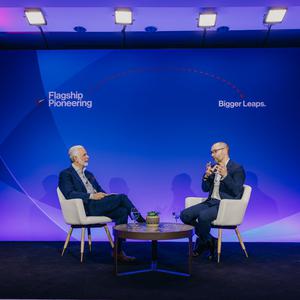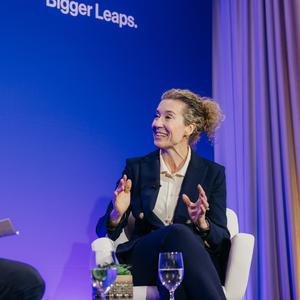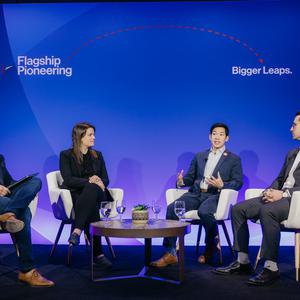According to Flagship Pioneering general partner David Berry, synthetic biology has been moving at an especially rapid pace over the past 10 years because of two advances. He says, “The two key components of synthetic biology—reading and writing DNA—represent the limit of Moore’s law."
In this context, reading DNA refers to the act of decoding the DNA sequence, or genome, of an organism. (For reference, a human genome contains approximately three billion pairs of DNA bases, denoted by the letters A, C, T, and G.) Cheaper, faster sequencing is allowing synthetic biologists to read an ever-growing number of genomes, which in turn sheds light on how different organisms are constructed at the level of their molecular and cellular machinery. With these insights, a synthetic biologist can begin to speculate about how individual components of that machinery could be repurposed, improved, or adapted for novel uses.
Writing DNA is the second critical area of technological innovation. More often referred to as “DNA synthesis,” it involves making strands of DNA of specific lengths with a specific sequence in a lab.
One striking illustration of the progress in bringing together DNA reading and writing is the generation of man-made life forms. In 2008, biotechnology entrepreneur Craig Venter announced that his team had created the first synthetic bacterial genome. A far more complex structure — an artificial yeast chromosome — was synthesized just six years later. In 2017, researchers reported that they had replaced 5 out of the 16 chromosomes in yeast with artificial copies. Synthetic human chromosomes have yet to be created, but the prospect is a tantalizing one: while gene therapies currently in development are designed to fix a single, faulty gene in specific cells or tissues, an artificial human chromosome might enable the replacement of larger sections of DNA in a way that could deliver significant therapeutic benefits.
A project announced in 2016, called Genome Project-Write, is even more ambitious. Its aim is to synthesize the genomes of plants, animals, and possibly even humans in whole or in part. The group expects its activities to generate powerful new insights into health and disease, and enable high-value innovations. The group’s first initiative, for example, involves engineering human cells so that they can resist viral infections. These so-called ultra-safe cells could be used without fear of contamination by biotech and pharma companies, which currently use purified human cells in some drugs.
Other applications more explicitly marry engineering and biology. Biosensors, for example, are organisms under development as living devices that record activity within cells or detect the presence of certain chemicals. Potential uses include monitoring in humans for medical conditions, detecting pathogens in food, checking air quality, and monitoring chemical levels in soil or water.
Importantly, constructing microbes, chromosomes, and whole genomes relies on DNA manufacturing, which used to be a painstaking process done by hand. Now, companies are using computers and robots to design and print out strands of DNA. Lab-made DNA continues to become cheaper and faster to make, which in turn is enabling increasingly ambitious experiments. Ultimately, if the process of making biological materials such as DNA can be standardized and automated in something resembling a car assembly line, some of today’s most advanced medical treatments, including gene and CAR-T therapies, could become more affordable and far easier to deliver to patients.
“The ability to create constructs that allow you to do what you want has been increasing at rates that could not have been anticipated. That has brought forth a kind of sky’s-the-limit mentality that has gotten a lot of people interested in the field,” says Berry. The real limit of synthetic biology technologies over the next decade may be our collective imagination.






